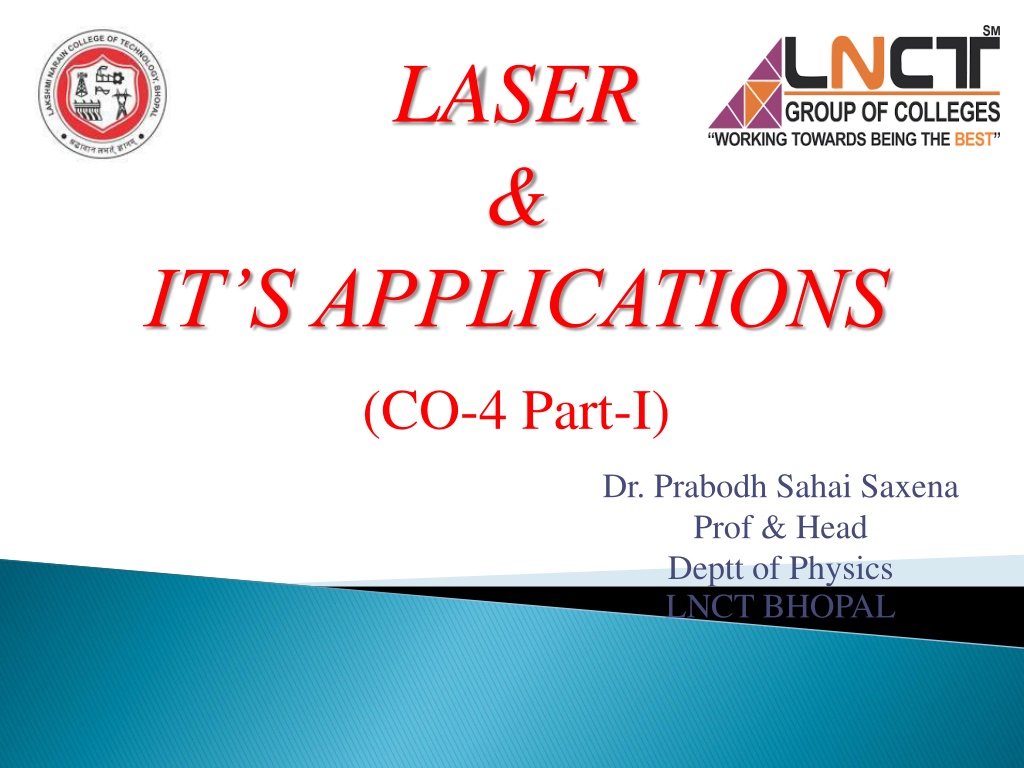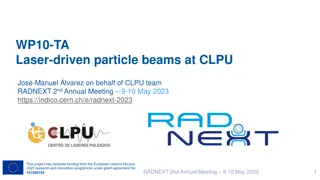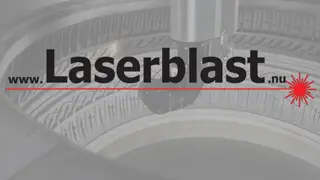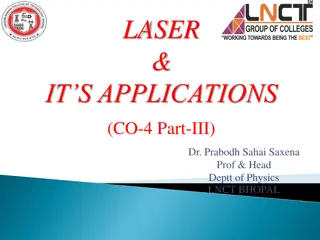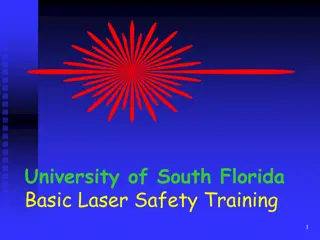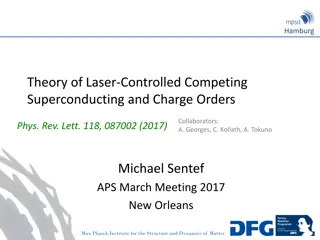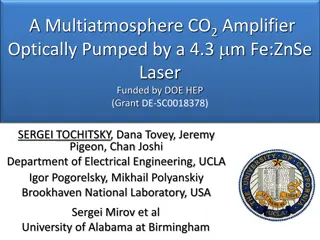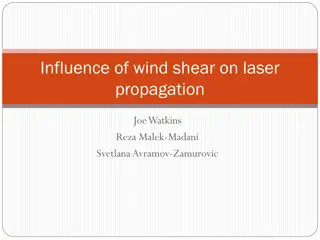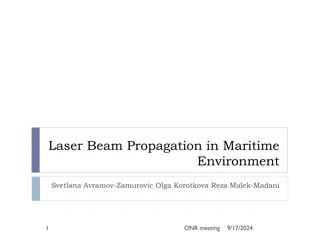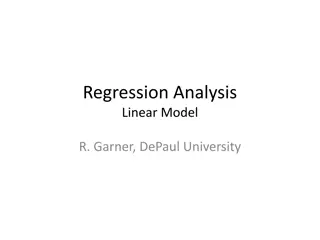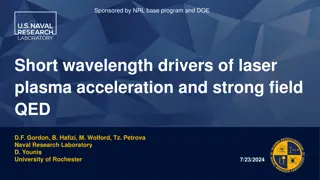Understanding Laser Technology: Principles, Applications, and Einstein's Coefficients
Exploring the fascinating world of lasers, this content delves into the principles governing laser technology, including the concept of stimulated emission by Einstein. It covers the characteristics of lasers, different types, and the significant contributions of pioneers in the field. The explanation of absorption, spontaneous emission, and stimulated emission of radiation, along with Einstein's coefficients, sheds light on the intricate workings of lasers. The importance of energy levels and the rapid increase in the probability of spontaneous emission with energy difference are also discussed.
Download Presentation

Please find below an Image/Link to download the presentation.
The content on the website is provided AS IS for your information and personal use only. It may not be sold, licensed, or shared on other websites without obtaining consent from the author. Download presentation by click this link. If you encounter any issues during the download, it is possible that the publisher has removed the file from their server.
E N D
Presentation Transcript
LASER & IT S APPLICATIONS (CO-4 Part-I) Dr. Prabodh Sahai Saxena Prof & Head Deptt of Physics LNCT BHOPAL
Introduction of laser Principle of laser Einstein s coefficients Main components of laser Importance of third energy level Types of lasers
Introduction The word laser is an acronym that stands for light amplification by the stimulated emission of radiation . Lasers are essentially have following characteristics- highly directional, highly intense, highly monochromatic & highly coherent optical light source.
Laser based on the principle of stimulated emission. Stimulated emission was postulated by Einstein as early as in 1917. In 1960, a solid state Ruby laser is developed by Maiman on this principle. In 1961, a gas state He-Ne laser is developed by Ali Javan and others in Bell telephone laboratory.
Einsteins coefficients are of three types. coefficient of Absorption (B12): P12=B12u( ) coefficient of Spontaneous emission (A21): P21=A21 coefficient of Stimulated emission (B21): P21= B21u( ) Where u( )=Energy density of the radiation
If A21 & B21 are the coefficient of spontaneous & stimulated emission respectively, then A21/B21 = 8 h 3/c3 Where c=3 108 m/sec=velocity of light Which conclude that probability of spontaneous emission increase rapidly with energy difference( E2-E1=h ) between two states.
Population Inversion:-This is the state in which larger number of atoms in the higher energy level than that the lower energy level. N2>>N1 Pumping:- The process of achieving population inversion is known as pumping. Most commonly used methods are as follows. Optical Pumping- (used in Ruby/NdYAG Laser) Electric Discharge (used in He- Ne Laser) Chemical reaction (used in CO2 Laser) Direct conversion (In semi conductor Laser)
Energy Source:- It is used to raise the system to an excited state. Active Medium:- This is the material in which population inversion achieves. This may be solid, liquid or gas. for example- In He-Ne Laser mixer of He-Ne gas, in Ruby laser ruby crystal, in NdYAG laser NdYAG crystal, in CO2 laser CO2 gas is active medium. Optical Resonator :- It consists of two mirrors facing each other. The active medium is enclosed by this cavity. One of the mirror is fully reflecting while other mirror is partially transparent.
With two energy levels rate of stimulated emission will equal to the rate of induced absorption. Therefore, condition of population inversion will not take place and laser amplification will not occur. So, third energy level is necessary for laser action. This is known as metastable state. Metastable state:- It is a long lived energy state (10-3 sec) in which atom can stay longer time as compared to excited energy state. It is exist above the ground energy state. This is necessary to achieve population inversion.
Among the various kinds of lasers some important types of lasers are listed below: Solid state laser : Ruby laser, NdYAG Laser Gas laser : He-Ne laser, Co2 laser Liquid laser : Europium chelate laser Dye laser : Courmarin dye laser Semiconductor laser : Inp laser
